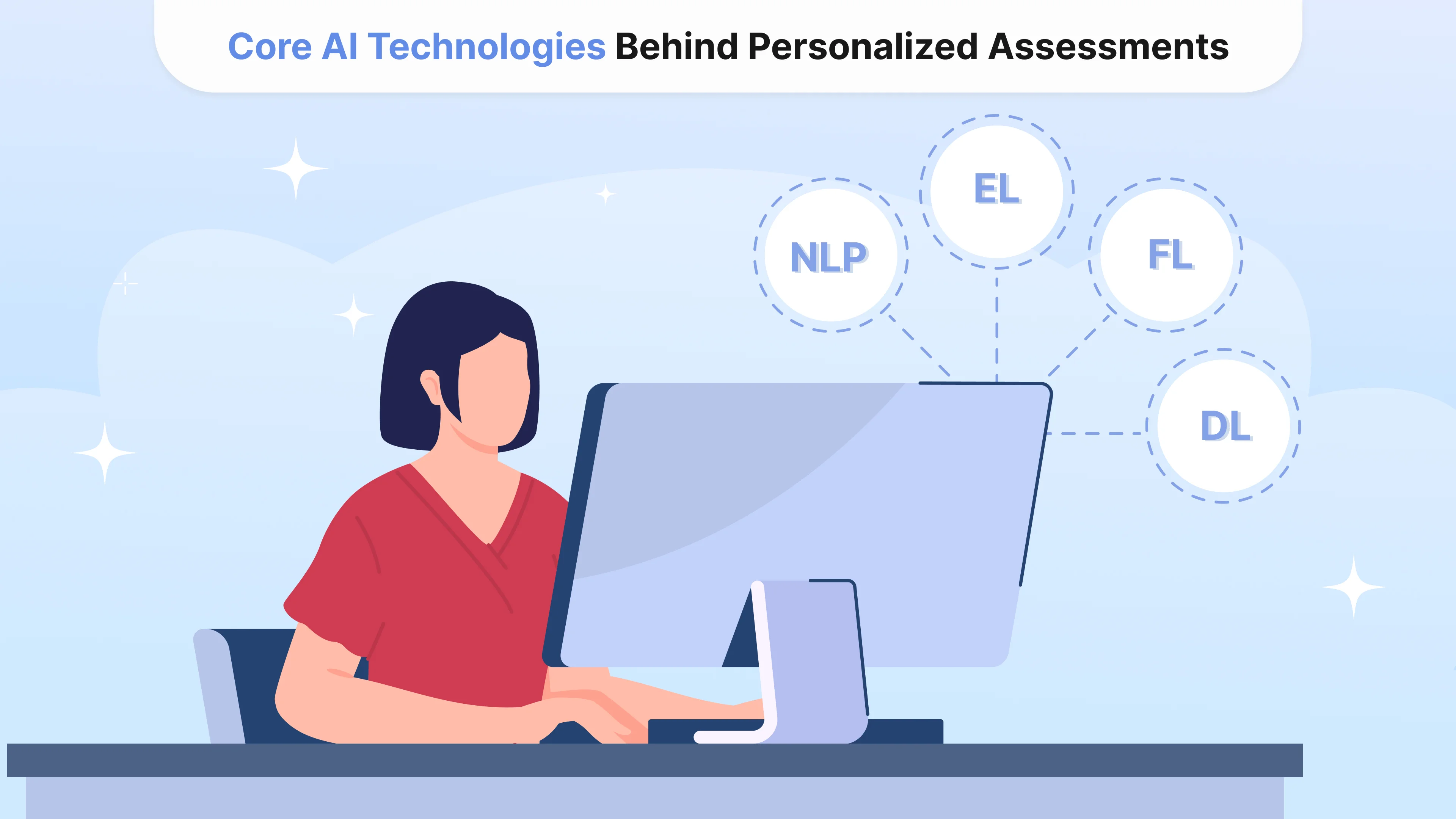

Personalized Health Risk Assessments Using AI Algorithms
Despite the rapid digitization of healthcare, most health risk models still rely on outdated, generalized metrics. Risk calculators like the Framingham Risk Score or BMI-based categorizations often apply the same logic to a 25-year-old marathon runner and a sedentary 55-year-old with a family history of heart disease. This approach, while easy to scale, fails to account for the complexities of human biology and behavior.
AI is now changing the equation. Algorithms can synthesize information from diverse sources—wearables, genetic data, lifestyle surveys, and even ambient signals from smartphones—to create dynamic, individualized risk profiles. These profiles not only capture a person’s current health status but also project their future health trajectory, identifying risks before symptoms arise.
Imagine receiving a real-time alert on your phone that your heart rate variability has decreased significantly for three consecutive days, and that—based on your personal trends and health history—your risk of a cardiac event is temporarily elevated. This is not a theoretical future: it’s happening today in clinical trials, health systems, and even consumer tech ecosystems. Personalized health risk assessments powered by AI are moving from concept to clinical and commercial reality.
In this article, we explore how AI-driven personalization is transforming health risk prediction. We’ll look at the technology behind these systems, real-world case studies from both startups and healthcare institutions, and the ethical and clinical challenges ahead. More importantly, we’ll ask: can machines know us better than our doctors do—and should they?
What Is a Personalized Health Risk Assessment?
In the world of clinical decision-making, risk prediction has long relied on what might generously be called “broad strokes.” Your doctor plugs your cholesterol, age, blood pressure, and smoking status into a calculator and out pops a number: your 10-year chance of a heart attack. But here’s the problem—these models were built on population averages. They’re calibrated for the statistical middle, not for you.
Now imagine this: two 45-year-old women walk into a clinic. Same BMI, same blood pressure, same total cholesterol. On paper, their risk scores look identical. But one is a single mother working night shifts, averaging four hours of sleep and spiking cortisol levels. The other runs triathlons, meditates daily, and has a resting heart rate of 52. A doctor might not know the difference. But an AI model connected to both their wearable data and behavioral history absolutely would.
This is the essence of a personalized health risk assessment. It’s not a better calculator—it’s a paradigm shift. These systems ingest hundreds, sometimes thousands, of data points: real-time sensor data, historical lab results, social determinants of health, even subtle behavioral markers from smartphone usage. Then, using machine learning models trained on millions of health outcomes, they construct a risk profile that is specific, dynamic, and sensitive to change.
Take, for example, GNS Healthcare’s work on predicting chronic disease onset. Their platform builds what they call “causal machine learning models” that don’t just find correlations but attempt to map the actual chain of health deterioration. In one deployment, their AI identified a subpopulation of patients who had been labeled as low-risk for Type 2 diabetes using traditional guidelines—but who were, based on overlooked combinations of early symptoms and genetic markers, highly likely to develop the condition within 18 months. For those flagged early, preventive interventions were launched. For the system, the feedback loop tightened. The model got better.
Or consider how health insurers are experimenting with hyper-personalized risk modeling to tailor benefits. One startup, using de-identified EHR and pharmacy data, found that patients who filled antibiotics late—not just whether they filled them, but how long they waited—had a statistically higher risk of hospitalization six months later. This wasn’t a variable any clinician had considered predictive. But the model spotted it, and now it’s part of a larger risk index used to prioritize outreach.
This is what makes AI-based assessments different. They don’t rely on what’s already obvious—they surface what human intuition might overlook. And they update. These systems aren’t recalibrated once every few years; they learn continuously. If your resting heart rate jumps 10 bpm for five days straight while your sleep quality tanks and your blood pressure creeps upward, the system doesn’t wait for your next annual physical. It flags the trend immediately, putting you on the radar for proactive intervention.
Core AI Technologies Behind Personalized Assessments

If personalized risk prediction sounds like magic, its engine room is anything but. At the core of these systems lies an evolving stack of AI technologies—each tailored to handle messy, high-volume, and high-stakes health data. The algorithms don’t just “learn” from data—they extract meaning from chaos. But not all models are created equal, and the differences in their capabilities have real-world consequences.
Most personalized risk engines are built using ensemble learning methods like gradient boosting machines or random forests, which are especially good at handling structured clinical data: lab values, vitals, and ICD codes. These models thrive on patterns that would take a human analyst weeks to notice—like the subtle ways hemoglobin levels, renal function, and certain medication combinations predict adverse outcomes. They’re fast, explainable, and relatively easy to validate.
But once you move into the unstructured world—doctor’s notes, pathology reports, audio from patient interviews—you need something else entirely. That’s where natural language processing (NLP) comes in. One notable example comes from the Yale New Haven Health System, where the NLP approach accurately extracted a patient's NYHA symptom class and activity- or rest-related HF symptoms from clinical notes of 34,070 patients with HF. The system extracted indicators like reduced ejection fraction and symptoms such as shortness of breath or fluid retention—data often buried in free text and missed by structured coding.
Then there’s deep learning. Neural networks, especially recurrent and transformer-based architectures, have found success in modeling time-series data from wearables or ICU monitors. These models are particularly good at capturing change over time—detecting, for example, not just that a patient’s heart rate is high, but that it’s been climbing steadily for the past 48 hours while their respiratory rate becomes erratic. In COVID-19 ICU cases, such patterns often preceded clinical deterioration by 12–24 hours, giving doctors a critical head start.
Perhaps the most quietly revolutionary development is federated learning—a privacy-preserving approach where AI models are trained across multiple decentralized data sources without moving the data itself. This matters because health data is siloed, regulated, and messy. Federated learning allows institutions to collaborate on model development without sharing sensitive patient information. In 2022, NVIDIA and King’s College London piloted a federated AI model trained on over 20 hospitals’ imaging data for brain tumor segmentation, without ever centralizing that data. The result: performance rivaling any one-hospital model, but at scale.
AI is also changing how risk models are validated. Instead of static AUC scores on holdout datasets, systems are now evaluated in live clinical workflows. Does the model surface a risk before a nurse or physician flags it? Does it change behavior? Does it reduce unnecessary admissions? In short, does it matter?
Critically, many of these technologies are now reaching the hands of non-technical users. Platforms like ClosedLoop.ai and Jvion package causal ML into interfaces that let care coordinators run simulations: “What if this patient improved their medication adherence?” or “What happens to risk if their sodium stabilizes?” These aren’t just forecasts—they’re tools for decision-making, intervention, and even reimbursement strategy.
Real-Time Examples of AI-Driven Risk Models
AI-powered personalized risk assessments are no longer confined to research labs—they’re embedded in commercial platforms, hospital systems, and even wearable devices. Perhaps the most striking examples lie in cardiovascular care. Cardiogram, in partnership with the University of California, San Francisco, trained a deep learning model on heart rate data from Apple Watch users to detect atrial fibrillation with 97% sensitivity. The system identified irregular patterns days before patients became symptomatic, often prompting them to seek formal evaluation and receive life-saving interventions.
In mental health, Mindstrong pioneered a model that analyzes passive smartphone data—typing speed, scrolling behavior, and sleep–wake cycles—to detect early signs of depression relapse. The system doesn’t just flag risk; it initiates outreach, offering behavioral coaching before symptoms escalate.
In oncology, IBM’s Watson for Genomics and other platforms like Tempus apply AI to genomic and clinical data to assess cancer risk, suggest treatment paths, and even estimate recurrence probability. For instance, by combining molecular profiling with natural language processing of pathology reports, these systems have helped oncologists identify mutation patterns associated with poor response to chemotherapy—paving the way for earlier shifts to targeted therapies.
These aren’t outliers. These are signals that the healthcare ecosystem is quietly shifting from reacting to disease to anticipating it—one dataset at a time.
Challenges and Ethical Considerations
As personalized risk modeling becomes more powerful, it also becomes more dangerous if misused. Chief among concerns is algorithmic bias. Models trained on non-representative datasets can systematically underpredict or overpredict risk for minority groups. A now-infamous case involved an algorithm used across U.S. health systems that was found to assign Black patients lower risk scores than white patients with the same clinical profiles, based on skewed historical spending data. The result? Black patients received fewer resources and less care.
Privacy is another flashpoint. The same data that enables deep personalization—GPS traces, voice samples, even text messages-can be abused if insufficient safeguards are in place. Federated learning and differential privacy offer solutions, but adoption is uneven. Informed consent remains a vague checkbox in many cases, especially when data is reused for model training across institutions.
Then comes explainability. Many deep learning models, while powerful, operate as black boxes. In clinical settings, this is problematic. If an AI flags a patient as high risk for sudden cardiac arrest but cannot articulate why, physicians are unlikely to act. Regulatory bodies like the FDA have begun issuing guidance on AI transparency, requiring not just performance benchmarks but interpretability strategies—such as SHAP values or feature attribution maps.
Lastly, there’s the question of autonomy. As risk predictions become more personalized and more persuasive, do they subtly coerce behavior? Does a nudge toward colonoscopy scheduling become pressure? And what happens when models get it wrong—missing a cancer or wrongly predicting a psychotic episode?
Personalized doesn’t always mean ethical. The future of AI in health will depend as much on design and governance as it does on math.
Conclusion
Personalized health risk assessments powered by AI are not just reshaping how we predict illness—they’re changing how we understand health itself. Risk is no longer a static number; it’s a living signal, continuously evolving and deeply contextual.
The promise of this technology is immense: fewer hospitalizations, earlier diagnoses, better-targeted interventions. But the risks—of bias, opacity, and overreach—are equally real. The question is not whether machines can know us better than our doctors, but whether they can know us ethically, equitably, and usefully.
If we get this right, personalized risk assessments won’t just be another clinical tool. They’ll be the compass guiding a new era of precision medicine—one that begins not at the point of crisis, but long before.
Tell us about your project
Fill out the form or contact us

Tell us about your project
Thank you
Your submission is received and we will contact you soon
Follow us
